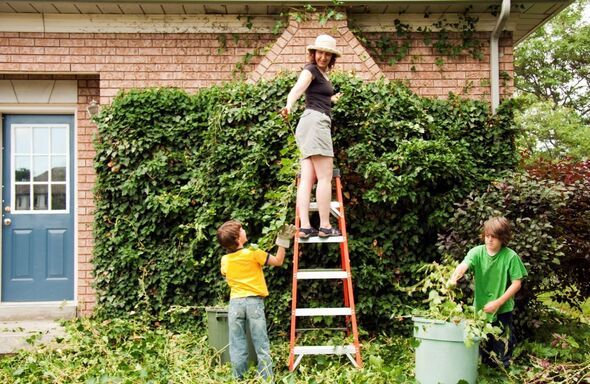
Homeowners are being urged to act now before the takes grip and it's one that could cost you thousands of pounds in repairs to fix. Spring is most quickly and if you don't act fast, it could mean disaster for your home.
Property experts at are warning homeowners of the potential dangers of ivy growth. The current warmer temperatures and increased sunlight are accelerating , making this the fastest-growing time of year for the invasive plant. These conditions encourage new shoots and leaf development, which can quickly overtake walls, fences and buildings.

While ivy is a staple of the , offering year-round greenery and privacy by covering unsightly garden fences or walls, it also poses significant risks when left unchecked.
In spring, , with a typical growth rate of 50 to 70cm per year.
Despite its aesthetic appeal, ivy can become a serious issue for homeowners, and property insurance does not cover the cost of repairs caused by ivy damage.
An survey and report will typically cost around £250, while professional ivy removal from house walls is usually £350.
For larger properties or areas requiring specialist equipment such as scaffolding, these costs can increase significantly.
If ivy has already caused damage to brickwork or mortar, Gaffsy warns that homeowners could face repair bills of up to £2,500.

Don't be fooled by its picturesque charm as ivy can cause more problems than it is worth.
It can deplete nutrients from garden plants, smother trees, and provide a hiding place for pests, vermin, and insects.
Worse still, can cause serious structural damage to homes by eroding brick and woodwork.
One of the biggest concerns is moisture retention - ivy's thick foliage can trap moisture against walls, preventing them from drying properly.
Over time, this can lead to significant damp problems, particularly in older buildings with inadequate damp proofing.
Damp issues caused by can lead to damaged wallpaper, peeling paint, crumbling skirting boards, and even mould and mildew growth - posing potential health risks to occupants.
If you're wondering how you can remove ivy, you should start by cutting it at the bottom and wait for about a week for it to die off.
Once it is dead, you should gently pull it away from the wall and apply weed killer to the area to prevent regrowth.
Oren Kander, senior valuer and director at Gaffsy said: "With spring beginning, now is the before it causes costly damage.
"Many people underestimate how invasive can be, but once it takes hold, the repair bills can be staggering - potentially reaching £2,500 or more.
"Worse still, most home insurance policies won't cover these repairs, leaving homeowners with an unexpected financial burden.
"If ivy has already impacted your property and you're struggling to sell, Gaffsy offers a simple, guaranteed cash sale with no need for costly repairs or maintenance."









